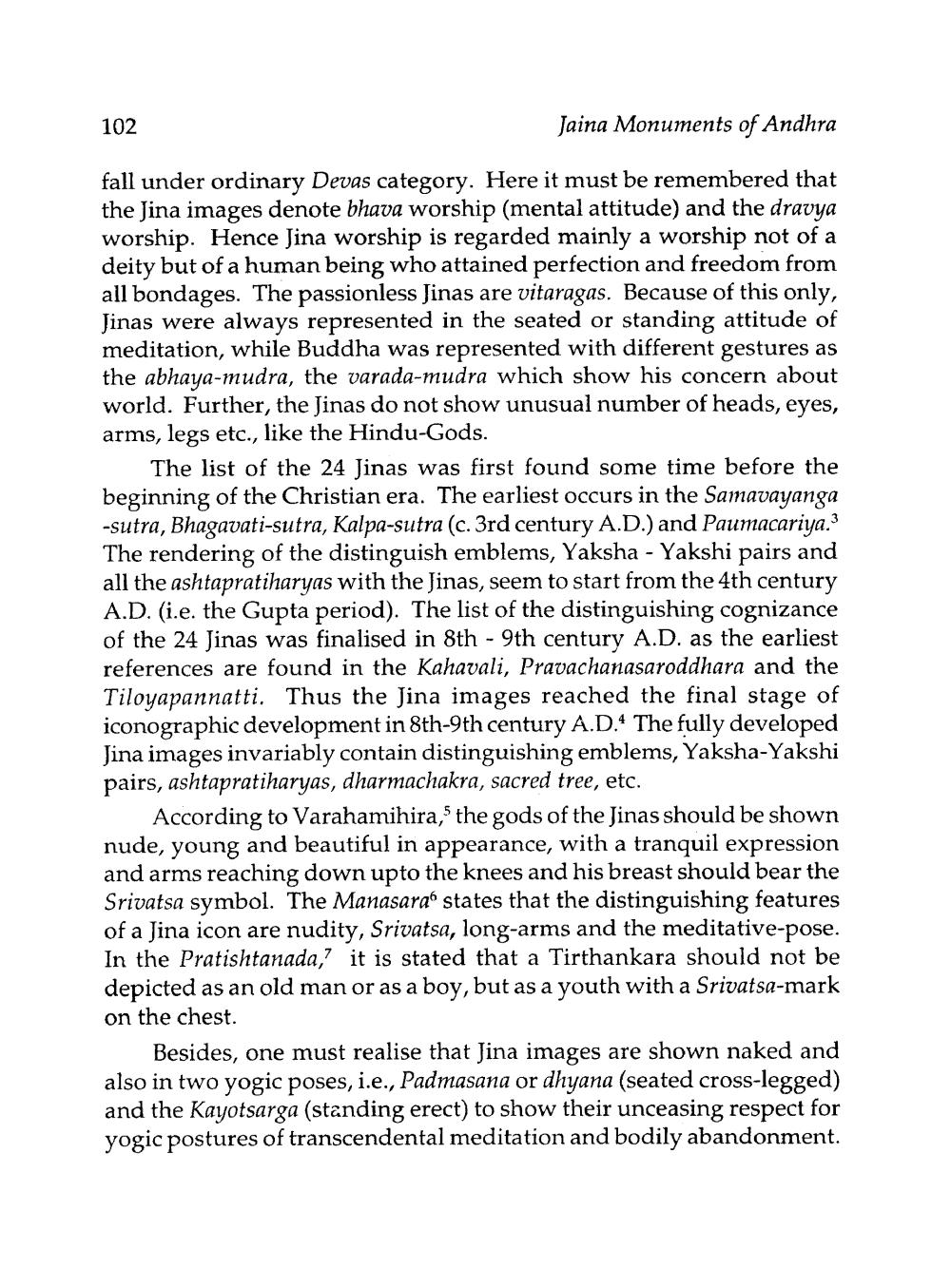________________
102
Jaina Monuments of Andhra
fall under ordinary Devas category. Here it must be remembered that the Jina images denote bhava worship (mental attitude) and the dravya worship. Hence Jina worship is regarded mainly a worship not of a deity but of a human being who attained perfection and freedom from all bondages. The passionless Jinas are vitaragas. Because of this only, Jinas were always represented in the seated or standing attitude of meditation, while Buddha was represented with different gestures as the abhaya-mudra, the varada-mudra which show his concern about world. Further, the Jinas do not show unusual number of heads, eyes, arms, legs etc., like the Hindu-Gods.
The list of the 24 Jinas was first found some time before the beginning of the Christian era. The earliest occurs in the Samavayanga -sutra, Bhagavati-sutra, Kalpa-sutra (c. 3rd century A.D.) and Paumacariya. The rendering of the distinguish emblems, Yaksha - Yakshi pairs and all the ashtapratiharyas with the Jinas, seem to start from the 4th century A.D. (i.e. the Gupta period). The list of the distinguishing cognizance of the 24 Jinas was finalised in 8th - 9th century A.D. as the earliest references are found in the Kahavali, Pravachanasaroddhara and the Tiloyapannatti. Thus the Jina images reached the final stage of iconographic development in 8th-9th century A.D. The fully developed Jina images invariably contain distinguishing emblems, Yaksha-Yakshi pairs, ashtapratiharyas, dharmachakra, sacred tree, etc
According to Varahamihira, the gods of the Jinas should be shown nude, young and beautiful in appearance, with a tranquil expression and arms reaching down upto the knees and his breast should bear the Srivatsa symbol. The Manasara“ states that the distinguishing features of a Jina icon are nudity, Srivatsa, long-arms and the meditative-pose. In the Pratishtanada, it is stated that a Tirthankara should not be depicted as an old man or as a boy, but as a youth with a Srivatsa-mark on the chest.
Besides, one must realise that Jina images are shown naked and also in two yogic poses, i.e., Padmasana or dhyana (seated cross-legged) and the Kayotsarga (standing erect) to show their unceasing respect for yogic postures of transcendental meditation and bodily abandonment.




